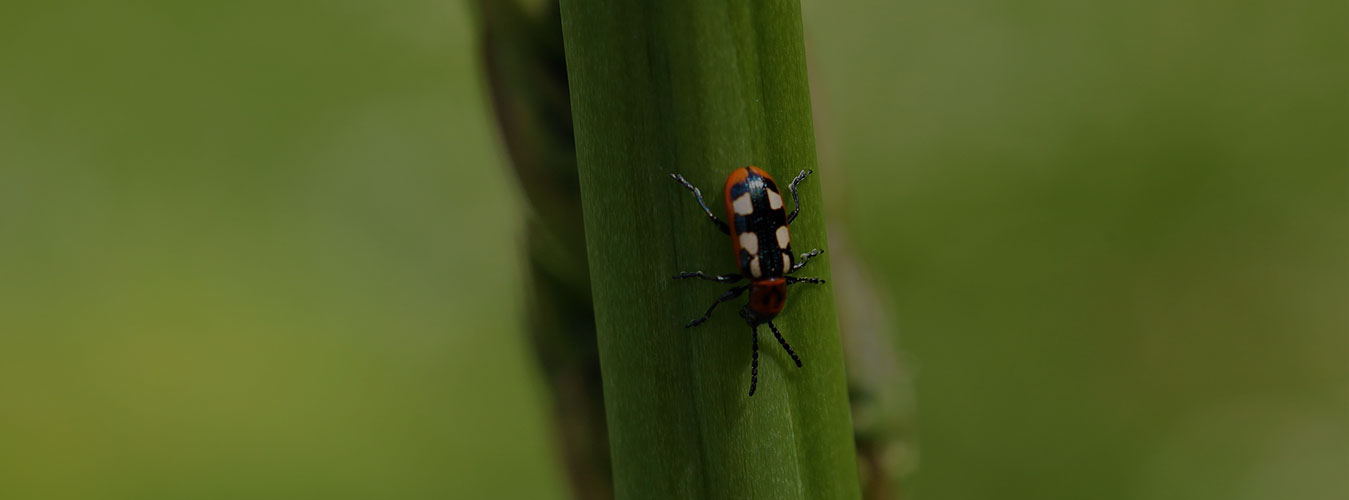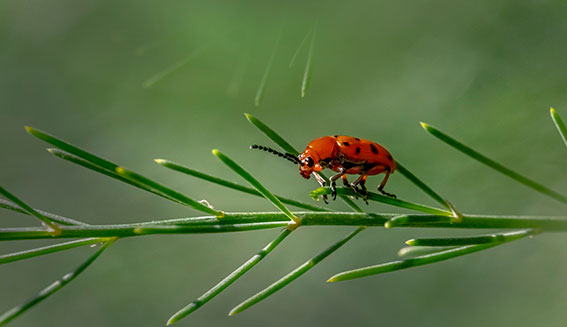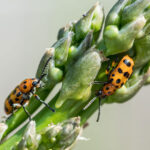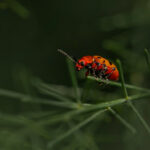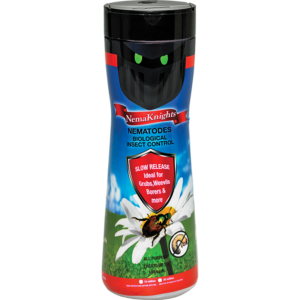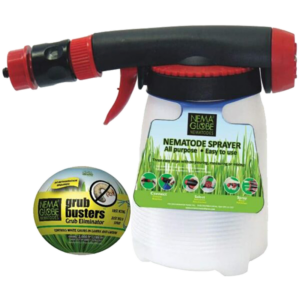Your cart is currently empty!
Damage
Common asparagus beetle is an important pest of Asparagus crops, and it is its only food plant. It frequently occurs earlier in the season wherever asparagus is grown. The adults feed on the asparagus spears and cause browning and scarring. Once the ferns appear after the harvest of asparagus, the larvae and adults can also chew the ferns. Beetles feeding on the ferns weaken the plant and reduce the plant’s ability to provide sufficient nutrients for the following season. Fewer ferns also make asparagus a target for Fusarium, a fungal disease. Moreover, the presence of common asparagus beetle eggs on the spears can make the asparagus unappealing.


